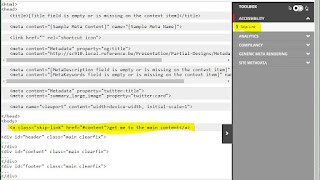Sitecore 9.1 Forms
The Forms feature has 2 major new features in version 9.1 of the Sitecore platform. You'll get conditional fields and prefilling of fields. It's about that last one I wanted to give you a little bit of advice...
Prefilling fields
Without going into too much details (Sitecore 9.1 is only released in tech preview at the time of writing - release version will be available soon) the prefilling is based on value providers - classes that will get the values based on a parameter defined with the field.
Prefilling is a nice feature, as it makes the user experience better and the conversion rate of the forms higher - visitors are lazy ;)
But.. before you jump into prefilling everything you think you know about me, read this article: https://www.campaignion.org/blog/all-you-have-know-about-pre-filling-forms
It is a good overview of what you can an can't do when prefilling forms. And there is one option related to Sitecore that I want to address.
Prefilling xConnext data
Sitecore environments usually have (a lot of) information about their visitors in the xDB database. It is very tempting to use that data to prefill the forms. But there might be catch..
Consider the following scenario (which is not so far fetched) on a website:
- a form with just an e-mail address to subscribe to the newsletter
- a contact form (with email, name, address, ...)
- all forms will identify the contact
- all forms use prefilling on fields where possible (all ootb xXonnect fields)
So, what is the catch? Well, if I subscribe you (yes, you.. not me) to the newsletter and the system already knows you it will attach my session to your profile. No harm done, until I visit the contact form and see all your contact data.
How do you prevent this? You probably want to keep the contact identifcation as that gives your marketers the information they want in the xConnect reports. Adding a Captcha to your form will help a bit (and this might be a good idea for other reasons as well). But actually, the only good solution is -as described in the mentioned post above- to only prefill data from a datastore (like xDB) when your user is really identified - meaning logged in or truly identified through an identifier in the querystring.
Conclusion
Prefilling is a nice new feature (and it looks better than the WFFM version). And I hope the community will start sharing value providers. But be aware of what you do with your visitors data.. after all, you don't want to end up in a next version of Mikkel Rømer "white hat hackers" session.







